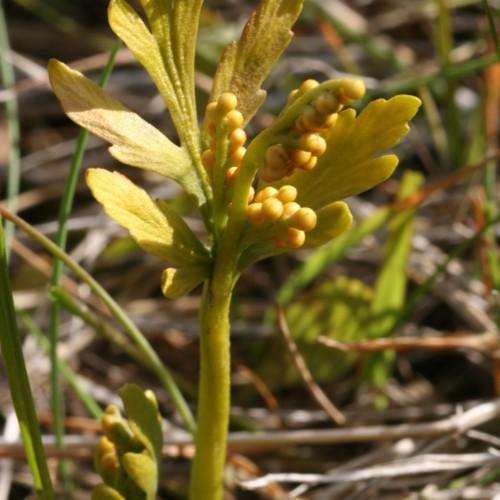
Triangle Grape Fern
Botrychium lanceolatum
Also Known As - Lanceleaf GrapefernWatering:
Minimal
Hardiness Zone:
Sun:
part shade,full shade
Leaf:
Yes
Growth Rate:
Low
watering
Echo Moonwort is a low-maintenance, perennial plant species that thrives in well-drained soils. They should receive regular watering to keep their soil moist but not saturated. Generally, they should be watered 2-3 times a week, providing enough water to saturate the soil around the roots but not to the point of run-off. During hot summer months, they may need to be watered more frequently to prevent the soil from drying out. During cooler winter months, they should be watered less often, allowing the soil to dry out slightly between irrigation. During periods of extreme heat or drought, Echo Moonwort may require more frequent watering to ensure their survival.
sunlight
Echo Moonwort (Botrychium echo) is a plant species that thrives in full sunlight. For optimal growth, this species requires at least 6 hours of direct sunlight per day. During the spring and summer months, this species should receive a minimum of 6 hours of direct sunlight during the middle of the day, when solar radiation is at its strongest. In the fall and winter, it is best to aim for 8 to 10 hours of direct sunlight each day, as the solar radiation is weaker during this time of the year.
pruning
Echo Moonwort (Botrychium echo) should be pruned in late winter or spring, depending on the climate where it is planted. Pruning should be minimal and only the dead or broken foliage should be removed. Excessive pruning will cause the plant to become thin and weak. When pruning, care should be taken not to damage any of the growing points, as these are where new foliage will appear.
